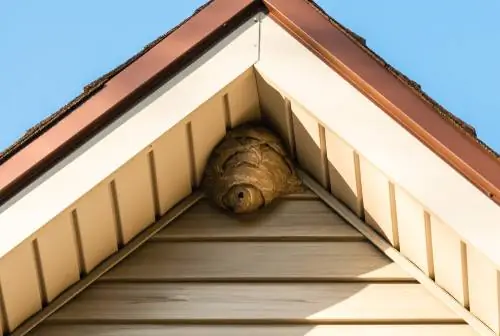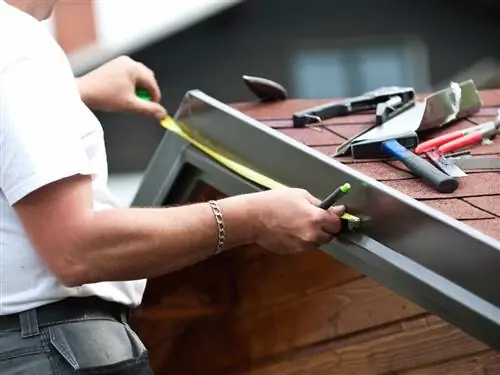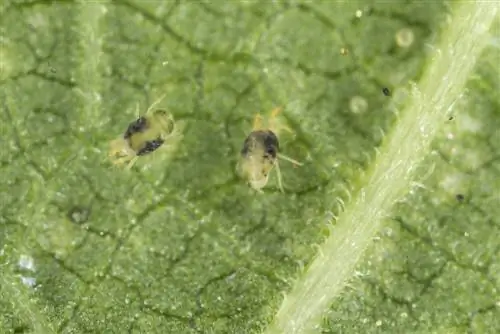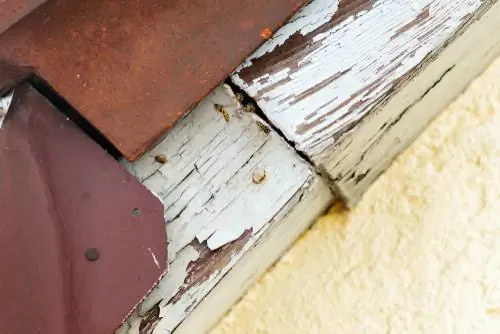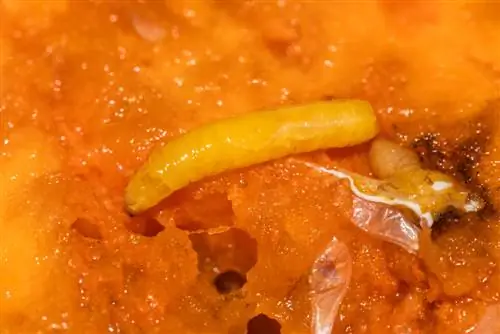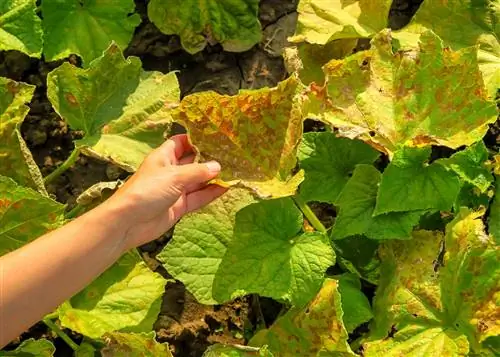- Author admin [email protected].
- Public 2023-12-16 16:46.
- Last modified 2025-01-23 11:22.
House roofs offer wasps ideal conditions for building nests. If a colony has settled in the attic area, it is not just the proximity of the dangerous animals that is problematic. The building structure can also be damaged over the course of the season.

Can wasps cause damage under the roof?
Wasps can cause damage to wooden beams and insulation material under the roof by removing material for nest building. However, serious damage to the roof structure is unlikely. Insulation that has been bitten through and cold bridges can be problematic.
Only certain types of wasps are relevant for the roof area
Wasps that build their nests near people and preferably in dark, protected cavities are usually only German and common wasps and hornets. All three species belong to the subfamily of real wasps. The Germans and the common wasps in particular are also the ones who are not shy about helping themselves to our outdoor dining tables and can be quite annoying.
If one of these species has discovered a niche in the roof structure for nest building, that is doubly problematic. A state can grow to up to 7,000 animals - and especially in a mass community, the stinging insects can become quite uncomfortable and can even be fatal for people with insect venom allergies and children. For this reason alone, having the nest removed by a specialist should be considered.
Possible damage to the building structure
In addition, the wasps definitely cause damage to the building structure when building their nests. The following materials are particularly at risk:
- Wooden beams
- Insulation material
Wasps are busy builders and have very powerful biting tools. On the one hand, they use these to gnaw off building material for their honeycomb structures and, on the other hand, they gain access to cavities that were initially denied. They can easily work their way through wood and insulation material. But plaster, concrete and stone are too hard for them.
The damage is caused primarily by the removal of the wooden beams and insulation under the roof. However, there is no risk that a roof structure will become seriously unstable and its load-bearing function will be impaired. The mass of removal is far too small for that. It can be problematic if the insulation is bitten through and the resulting cold bridges arise.
Appropriate measures
Old houses in particular are particularly susceptible to wasp colonization under the roof. On the one hand, there is a lot of wood here and it tends to be rotten, making it easier for wasps to remove. On the other hand, cracks in the plaster and hand-crafted, incompletely staggered roof tiles offer them easy access to attics.
Particularly in the case of old houses, it is therefore advisable to regularly maintain the walls and roof and close any weak points in good time before spring.
An existing wasp nest should, if possible, be relocated by a specialist. Closing entrances is not only a criminal offense because of the protection of wasps' species, but may also increase the damage because the animals then gnaw their way through other paths.
In the fall, when the nest is orphaned, you should clean the area thoroughly with vinegar water and repair any damaged areas. This will also prevent another queen from founding her state here the following year.

